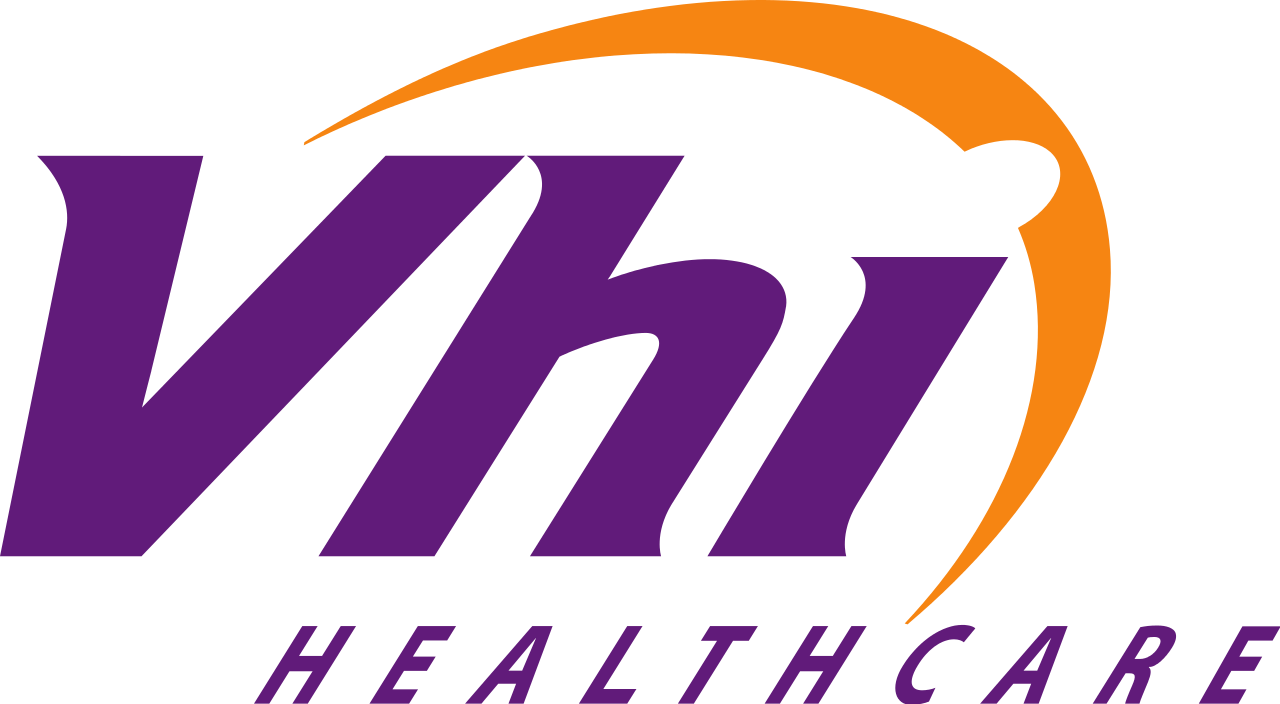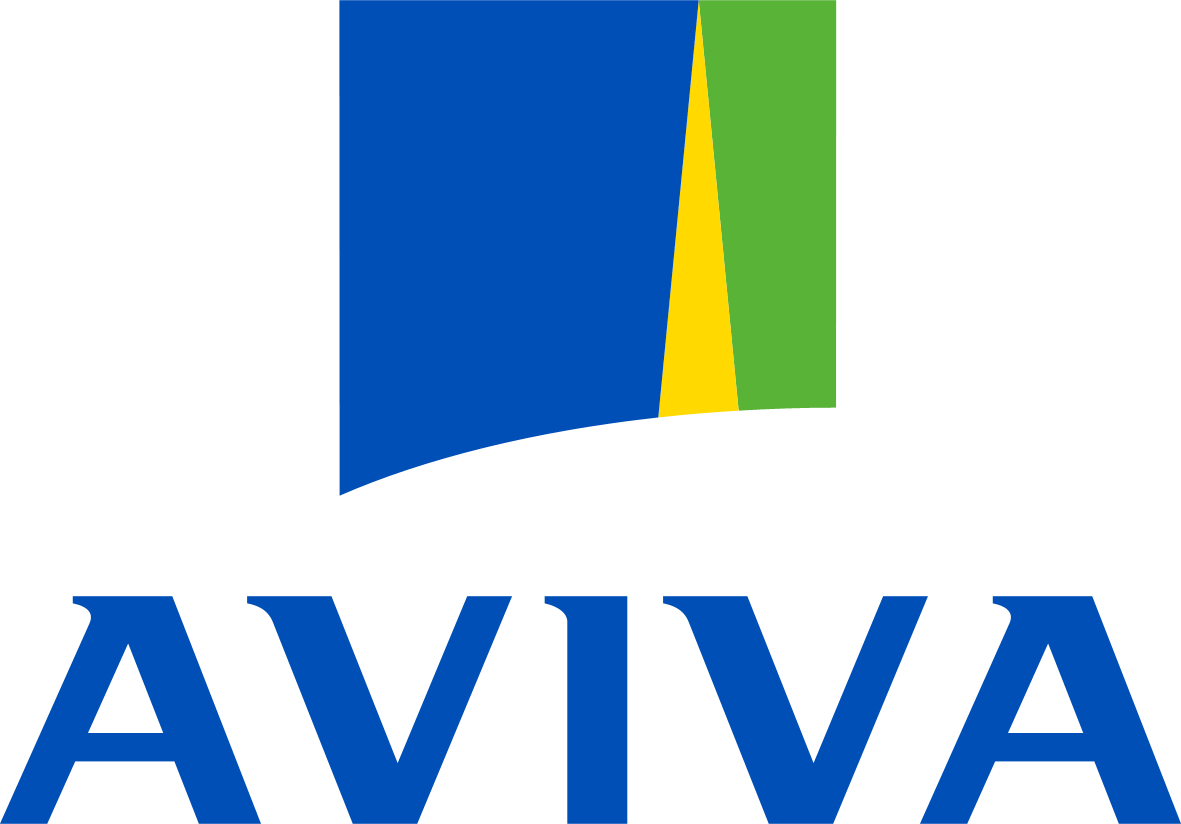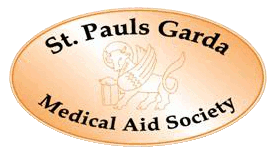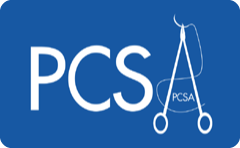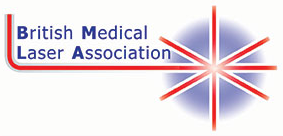 Download this information as a PDF
Download this information as a PDF
PRIMARY CARE MANAGEMENT OF CHILDHOOD ATOPIC ECZEMA
INTRODUCTION
Atopic Eczema is an inflammatory skin disease categorised by an itchy, erythematous, demarcated rash, which has a predilection for the skin creases. A.E. is a familiar disease of unknown origin that is part of the spectrum of atopy (often linked with asthma and hay fever). These atopic individuals have a genetic predisposition to react to triggers in the environment by developing the various atopic disease states, which in the case of A.E. is itchy skin. (Photo 1). These atopic patients are often best managed within general practice as all aspects of their atopic state (skin, lungs, nose, gut, etc) can be dealt with in a holistic way rather than the organ specific approach often offered by consultants in various specialities.
A.E. can cause significant morbidity for both the child (itch, scratching, mood changes and sleep disruption) and the parent (sleep disruption, tiredness, exhaustion, emotional distress and frustration).
(1) There are two basic defects which induce skin problems in A.E.:
1. Dry skin which impairs their natural skin barrier function, making them susceptible to cutaneous infections, irritants and allergies.
2. An abnormality of the immuno-regulatory system.
Approximately 20% of children in Northern Europe have A.E. for a certain period of time early in life (2). Disease activities vary from mild or moderate in most cases, to severe in approximately 15% of patients (3). Unknown environmental factors have led to a significant increase in the incidence of Atopic Dermatitis over the past 40 years. Most individuals with atopic disease tend to improve with age. However, their predisposition is always there and exposure to triggers will cause a recurrence of the disease in later life.
Most patients with A.E. are managing in Primary Care. About 30% of dermatological consultations in general practice are due to A.E. (4). Treatment principles are emollients to counteract the dry skin and topical immuno-suppressive compounds such as steroids or the newer topical immuno-modulators to reduce inflammation, itch and scratching.
The essence of good management of patient with A.E. in primary care is good communication between the Doctor and the patient or the parents. There are many misunderstandings and myths surrounding A.E., particularly in children. Many parents believe that allergies lie behind the development of Eczema and most consider food allergies to be the cause, with cows’ milk as the major culprit. However, in practice, only a small percentage of children with severe A.E. have genuine underlying food allergies. In their often futile search for food allergies parents often underestimate or disregard important triggers such as dry skin, skin infection, irritants and air-borne allergens such as house dust mites, pollen and animal dandruff. Approximately 60% of parents are scared of using topical steroids, which leads to lack of compliance (5). These steroid-phobics often end up giving their children safe, effective treatments with appropriate topical steroids. Parents need to be reassured about the appropriate use of topical steroids in children by being given strict guidelines as to which steroids to use, on which part of the body and the maximum amount to be used in any one week or month. There was undoubtedly an over-reliance on topical steroids in the management of A.E. in patients in the past which invariably lead to side effects such as skin atrophy or effect on the hypothalamic – pituitary – adrenal axes. Invariably more children now suffer from under-use rather than over-use of topical steroids.
DIAGNOSIS OF A.E.
A.E. is usually easily diagnosed on clinical grounds based on the clinical manifestation of the eruption and a detailed medical history (6). Skin biopsys, blood or allergy testing are not helpful in the diagnosis (see Table 1). Differential diagnosis includes seborrhoeic dermatitis, psoriasis, contact allergic dermatitis, irritant dermatitis, scabies and drug eruption.
MANAGEMENT OF ATOPIC DERMATITIS IN PRIMARY CARE
At least five issues should be considered when planning treatment for children with A.E.
1. Dry skin.
2. Itch.
3. Topical steroids.
4. Skin infection.
5. Allergies.
1. DRY SKIN
All patients with A.E. have dry skin which impairs the skin barrier function leading to increased water loss and great sensitivity to irritants, allergens, infection and scratching. Emollients are the first line treatment to which others may be added in all types and severities of A.E. Frequent and liberal use of the appropriate emollients repair the deficient skin barrier function, ease the itch, thereby breaking the chronic “itch scratch cycle” and have a steroid spearing effect (7). As a general rule, emollient use should exceed steroid use by 10:1 in terms of quantities used for most patients. (8)
The choice of emollients will depend very much on the Doctor and the patient, or parent preference. The ideal ammoniant should be queasy, free of any allergens or irritants, cheap, cosmetically acceptable and easy to apply to the skin. Emulsifying Ointment B.P. is probably the gold standard and is available on the medical card and under the drug refund scheme. It can also be used as a soap substitute and can be diluted with some boiling water to make a bath oil (see Table 2).
Emollients are best applied with the skin is moist such as after an oily bath. Ideally emollients should be reapplied at least 3 or 4 times per day. Many patients, parents and doctors underestimate the quantity needed and frequency of application to achieve maximum effect. The recommended quantity used in generalised Eczema is 500g per week for an adult and 250g per week for a child. (9). Babies often tolerate a warmed emollient better than a cold preparation. A minority of children may prefer a cool emmollient because they find they have a great antipruritic effect. The only rule when applying emollients is to always rub downwards, particularly on the hairy parts of the body such as the arms and legs, as rubbing upwards against the direction of the hairs can cause folliculitis. The G.P. should have a large tub of emulsifying ointment (500 mg) in his/her office to demonstrate the quantities required and the techniques for application. This should also be supported with written information for the patient or parent to take home.
Bath oils such as “Oilatum” and “Baleum”, are popular among patients but the evidence of their applicacy is not currently available. Some bath oils have added anti-bacterial agents which are supposed to reduce the incidence of skin infection (eg: “Olatum Plus”, “Emulsiderm”).
It is important that all patients with Eczema avoid soaps and shampoos, as these products can dry the skin even further. Suitable soap substitutes need to be recommended such as “Emulave Wash”, “Bath E45” etc.
2. ITCH
The majority of the physical changes seen in the skin in patients with A.E. are induced by itching and scratching. Patients with Eczema have itchy skin and when they scratch they exacerbate their Eczema, this is known as “the itch scratch cycle”. We still do not understand which mediators elicit the intensive itch in A.E., although most investigations to date suspect Interleukin-2 as being important, which is a cytokine released from activated T lymphocytes. Treatments that inhibit activated T lymphocytes will always reduce itch such as Cyclosporin and Immuno Modulators such as tacrolimus and ascomycin which specifically inhibit the release of Interleukin – 2.. Histamine does not play a major part in A.E. so the new non-sedating antihistamines are generally unhelpful in A.E. Sensitive anti-histamines maybe helpful in improving sleep and reducing itch at bedtime but the mode of action is almost certainly by virtue of their sedative effect (10) but they are not licensed for children under the age of 2 years.
A simple remedy to relieve the itchiness is by cooling the skin. Dressing kids in light, cotton clothing and keeping their bedrooms and the beds cool, usually helps. Nails should be kept trimmed back at least twice a week and children should not be left undressed for any longer than is necessary. Brand labels should be carefully removed from the inside of garments that touch the skin such as vests and shirts as they can cause irritation of the skin.
Children will often scratch more if they are irritable or distressed for any reason. Older children maybe encouraged by behaviour modification such as rewards, praise, star-charts to resist the temptation to scratch. Younger children need to be distracted to try and help them to stop itching. Cotton mittens or stockings on the hands or special baby-grows which have mittens attached to the sleeves are helpful to minimise the scratching at night. Itch is usually worse at night or for various reasons such as over-heating, exposure to allergens such as house dust mite and little in the way of distraction. It is probably best to use topical steroids and sedating antihistamines in the evening. Emollients should be used during the day.
3. TOPICAL STEROIDS
Topical steroids remain the major intervention for the treatment of exacerbations and flare-up of A.E. It is important to discuss the risks versus benefits of topical steroids with the parents and to explain the difference between a mild, moderate, potent and very potent steroid (see Table 3). Diluting a topical steroid (eg: Betnovate R.D.) dose not make it less potent. When prescribing topic steroids, particularly in children, it is important to have regular follow-ups to monitor the treatment and to reassure parents that they are using appropriate and safe amounts of the right concentration of steroids. The strength and amount of steroids can be reduced as the eczema comes under control and it is important to constantly stress the importance of frequent application of emollients which have been shown to have a steroid sparing effect. Weak steroids such as 1% hydrocortisone are absorbed during the initial treatment of A.E. from under the skin barrier. As function is repaired this absorption becomes insignificant. In most children mild or moderate topical steroids are sufficient to control flare-ups of A.E. Short bursts of topical steroids on the body for a maximum of one to two weeks are usually quite safe, even in small children, and their use is akin to using a short course of oral steroids in children with a flare-up of asthma.
Only a weak topical steroid such as 1% Hydrocortisone should be used on the face in children. Topical steroids in an ointment base, which have less preservatives, are usually considered safer and more effective than treating dry eczema. (11). If the Eczema is wet, which usually implies infection, a cream based topical steroid combined with a topical or systematic antibiotic may be necessary in the first month or two of treatment until the Eczema dries up. The weakest topical steroid should be chosen to control the disease effectively. The desired strength of topical steroid may be determined by a step-up approach (starting with a mild potency and stepping up to a moderate or potent topical steroid if required) or a “step down” approach (- a more potent to less potent topical steroid) until the Eczema is controlled. Most topical steroids probably work just as well once daily, preferably at night to relieve bedtime itch and scratching (12). Emollients can then be applied liberally throughout the day. Very potent steroids and oral steroids are almost never necessary when treating A.E. in children.
Wet wraps can be a very practical and effective method of controlling flareups of A.E. in children. This involves the liberal application of a cool emollient all over the body with the addition of a topical steroid to the badly affected areas. This body is then wrapped with damp cotton gauze, usually in the form of tubular dressings, which come in various sizes to fit arms, legs and the trunk. A final dry layer of cotton gauze is wrapped over the damp layer and the child is usually dressed with the wet wraps being left on for 12-24 hours. Weaker dilutions of topical steroids under wet wraps maybe of similar efficiency to those of stronger topical steroids without wet wraps. (13) A lot of the advantages of the wet wraps is probably gained from the protection of the skin from scratching and also cooling of the skin and enhanced penetration of the ammoniams and cortoco steroids.
Appropriate quantities of topical steroids need to prescribed, depending on the extent of the Eczema and the age of the child. The finger-tip method is an easy way to know how much steroid is required to cover a specific area of the body. (14)
A finger-tip unit (FTU) is the volume of steroid expressed from a 5mm nozzle to cover an adult digit from the distal finger crease to the finger-tip (equivalent to approximately 0.5g of cream or ointment)(see Table 4). A simple “rule of thumb” is that one FTU covers the area of skin covered by two adult hands. Table 5 shows the weekly requirement of cream or ointment in grams for once daily treatment of topical steroids.
Table 6 shows the maximum amount of Topical steroid that can be safely prescribed in adults and children when used for chronic therapy (i.e.: when use is going to last more than 2 months). (15)
Patient and parental anxiety can be heightened by doctors or pharmacists labelling topical steroids with unhelpful terms such as “use sparingly”. It would be far more useful to give the patient or parent some idea of how long a specific size of tube should last before they have to get another. It would also be helpful to indicate on the tube whether it can be used on the face or not.
4. SKIN INFECTION
Most patients with A.E. has staphylococcus colonizing their skin. Staphylococcus can sometimes cause a significant clinical infection, which results in a flare-up of A.E. This is usually clinically apparent as the Eczema becomes wet, weepy or crusty and the rash becomes painful or sore rather than itchy. The first line treatment for these flare-ups is either topical (e.g. Fucidin or Bactraban cream) or systemic antibiotics (e.g. Fluloxaillin or Erythromycin) or both. Topical or systematic antibiotics should be used for only 1-2 weeks to avoid the development of resistance organisms (16). Staphylococcus aureus secrete super antigens which can induce corticosteroid insensitivity (17).
However, sometimes combining Atopical steroid topical antibiotic can be useful for regular flare-ups of A.E. in the first week or two (18) (e.g. “Fucidin HC”, “Betnovate N”). Antiseptic bath therapy using either potassium permanganate or chlorhexidine 0.05% can be helpful when there is clinical infection. Other antiseptics combined with bath emollients include “Oilatum Plus”, “Oilatum Junior Flare-Up” and “Emulsiderm”.
Any child with a sudden worsening of their A.E. should be suspected of having a significant clinical infection and will usually respond to topic or systematic antibiotics. Swabs for culture and sensitivity are usually only necessary if the infection fails to respond to treatment in order to identify antibiotic resistant strains of Staph. aurus or detect additional streptococcal infection.
Care needs to be taken to avoid contamination of tubs or tubs of ointment. The caps should be securely tightened when the tub is not in use. Ointments in tubs should be removed with a clean spoon or spatula rather than with the fingers. Tubes or tubs that are not used up after six or twelve weeks should be dis-guarded. Hands need to be washed carefully (with a soap substitute if required before and after applying creams or ointments. “Antiseptic soaps” are usually unhelpful and can sometimes cause allergic reactions.
5. ALLERGIES AND A.D
Many parents and some doctors believe that A.E. is due to a food allergy. Research has shown that only a small proportion of our young children with severe or extensive A.E. have been found to have true food allergies. While there is a great interest and demand for allergy testing, this is usually only worth pursuing in children with severe refractive A.E. All others can usually be safely and easily managed by appropriate attention to moisturisers, controlling infections, avoiding irritants and the use of mild or moderate topic steroids.
If allergies are suspected, proper testing should be carried out as allergen avoidance can be difficult, expensive and potentially dangerous if a child is left on a restricted, unbalanced diet for a long period of time. There are many children and some adults who are subjected to unorthodox and unproven allergy tests such as Vega Tests, Pulse Analysis and such like, and put on ridiculously strict diets without any medical or dietician supervision and often with no real benefit to their underlying skin problem. (19)
The most useful “allergy test” is a detailed medical history. If further proof is required with regard to a suspected allergen, the following allergy test may be helpful in severe or unresponsive cases of A.E.
A: IgE and R.A.S.T. (radioallergosortent test)
This blood allergy test detects immediate hyper-sensitivity to a variety of allergens such as foods, animals and house dust mites. Interpretation of the results can be difficult as false positives can sometimes be found. In addition, positive results may reflect other associated allergies such as asthma or hayfever rather than having direct association with the skin. Negative tests may be more suitable because of their high negative predictive value. This test can sometimes be useful in persuading parents to put their children back on foods that they have been taken off previously as a result of unscientific, unorthodox “allergy tests” in the past.
B:Skin Prick Tests
This will again detect immediate hyper-sensitivity to various allergens such as animals, house dust mite, pollen, moulds and foods. The test causes only minor discomfort and is simple to perform even in very small children. Anti-histamines have to be avoided for at least one week before this test. The advantage of skin prick testing is that it takes only 15 minutes to carry out and the results are available immediately. However, the interpretation of the results is the most crucial part of the testing and therefore, like all allergy testing, is best carried out by doctors who are performing these tests frequently.
C: Skin Patch Allergy Testing
This is used to detect delayed hyper-sensitivity reactions to substances that are coming in contact with the skin such as topical steroids (20), fragrances, preservatives, nickel or rubber (contact allergic dermatitis). The test involves sticking patches containing various common allergens (e.g. “The European Standare Test Series”) onto the patients back for 48 hours to look for skin reactions. This test can be difficult to perform in very small children
D:Exclusion Diets
This is probably the most difficult with the most accurate way to find out if a child is allergic or intolerant to various food groups. Exclusion diets should only be carried out on children with severe unresponsive A.E. and only in conjunction with a Clinical Dietician who can ensure that the child is left on an adequate nutritious diet. Specific food groups such as dairy produce, eggs, milk or wheat should be strictly avoided for a limited period of at least 4-6 weeks. The restricted food should then be reintroduced so that the Doctor and patient or parents can judge if the diet was helpful. Food groups can be excluded in rotation, one at a time, or in severe cases a number of food groups can be excluded simultaneously and then reintroduced individually with at least one week between reintroducing in each individual food group. The most commenly implicated foods include dairy produce, eggs, wheat, soya and foods rich in colourings and preservatives.
Soya and goat’s mild are no longer the substitute choice for cow’s milk allergies, as children who are allergic to cow’s milk proteins are often allergic to the proteins in Soya and goat’s milk nutritionally balanced as cows milk. Partially hydrolysed (mild proteins are pre-digested) formulae are the substitute of choice for small children with cows milk allergies. (eg: Nutrilon Pepti) (25). There is conflicting evidence as to the value of breast feeding and its effect on the development or severity of A.E. in the child. (21)(22). Allergen avoidance by the mother during breast feeding has not been shown to reduce the incidence or severity of food allergies in the child (23).
WHEN TO REFER FOR A SECOND MEDICAL OPINION
Approximately 85% of children with A.E. have mild or moderate disease and can be easily and successfully managed in primary care. The other 15% of patients will have more severe disease activity and may need to be referred to a GP colleague with a special interest in Dermatology, or to a Consultant Dermatologist for further assessment and possibly treatment with more potent agents such as cyclosporin or Azathioprine. Sometimes children with less severe disease may need to be referred for a second medical opinion if the child or parents are becoming exasperated with the disease. Often all they need is reassurance that the current treatment is appropriate, safe and the condition usually settles down and resolves as the child gets older (24) see Table 7).
COMPLIMENTARY OR ALTERNATIVE THERAPY
There is a myriad of alternative or complimentary therapies which claim to cure A. E. Some encouraging results have been obtained from certain Chinese herbal medicines although their effectiveness remains unclear and liver toxicity is well recognised. (26) (27) (45.A). While there are undoubtedly good Chinese Herbal Practitioners, there are also many people claiming to be experts in the field but have little or no training. Other alternative or complimentary therapies such as homoetherapy, acupuncture, aromatherapy, crystal therapy have been shown to be ineffective or have not been subjected to valid scientific trials.
NEW TREATMENTS FOR ATOPIC DERMATITIS
The biggest break-through in the last few years has been the introduction of topical immuno-modulators such as Tacrolimus (Protopic 0.03% and 0.01%) and ascomycin (“Elidel”) which are available in the U.S.A. and soon to be released in Ireland. Tacrolimus has been used systemically for many years as an immunosuppressive drug in solid organ transplantation. When used topically it has been found to suppress T cell activation and inhibits the release of inflammatory citokins. This reduces itch and therfore prevents scratching. They appear to have an excellent safety profile with little systemic absorption and no skin thinning. They can be used on the face and inter-triginous areas safely (28). Tacrolimus Ointment (0.03% or 0.01%) achieved greater than 90% clinical improvement in adults (29) and paediatric (30) patients with A.E. However, Tacrolimus induces skin burning in around half of the patients treated but this usually diminishes during the first week of treatment as the Eczema is alleviated. A small number of patients experience influenza like symptoms, a skin rash or headaches. Tacrolimus appears to be safe and effective even in long-term treatment of A.E. in children and will undoubtedly compete with topical steroids as a safe, effective, if somewhat expensive alternative in the management of A.E. particularly in children (31).
CONCLUSION
Most children with A.E. can be managed safely and effectively in primary care by the liberal use of emollients, the rational use of topical steroids, eradication of clinical apparent skin infections and avoidance of irritants and allergens. Severe unresponsive cases (less than 15%) may need to be referred for a second medical opinion for a more detailed evaluation and sometimes more potent treatments. Newer treatments that will be coming on the market in Ireland within the next year or two, such as Tacrolimus and Ascomycim offer a safe effective alternative to potent topical steroids, particularly in the management of Atopic Dermatitis in children.
Table 1 - Diagnostic criteria for atopic eczema
Must have An itchy skin condition (or report of scratching or rubbing in a child) Plus three or more of the following:
- History of itchiness in skin creases such as folds of the elbows, behind the knees, fronts of ankles, or around neck (or cheeks in children under 4 years).
- History of asthma or hay fever (or history of atopic disease in a first degree relative in children under 4 years).
- General dry skin in the past year.
- Visible flexural eczema (or eczema affecting the cheeks or forehead and outer limbs in children under 4 years).
- Onset in the first two years of life (not always diagnostic in children under 4 years).
Table 2 - Some choices of emollients graded according to their greasiness
Thick & Greasy:
- Emulsifying ointment (100g + 500g, available on the Medical Card).
- White soft paraffin (100g + 500g).
- Liquid paraffin/white soft paraffin in equal parts (Paraffin Gel) (500g)
- Epaderm (only available in the UK and Northern Ireland). 125g, 500g.
- Hydrous ointment (500g). Neutragena dermatological cream.
- E45 cream.
- Aqueous cream (100g+500g available on the Medical Card).
Light & Creamy:
- Diprobase cream (50g or 500g pump).
Table 3 - Steroid potency by product
| Steroid potency | Examples listed in order of increasing cost |
| Mild | 1% Hydrocortisone preparations |
| Moderate | Eumovate, Modrasone |
| Potent | Synalar, Betnovate, Locoid, Diprosone, Elocon. |
| Very potent | Dermovate |
Table 4 - Application of steroid by FTU by body site
| Age | Face & Neck | Arm & Hand | Leg & Foot | Ant Trunk | Post Trunk |
| 3 to 6 Months | 1 | 1 | 1.5 | 1 | 1.5 |
| 1 to 2 Years | 1.5 | 1.5 | 2 | 2 | 3 |
| 3 to 5 Years | 1.5 | 2 | 3 | 3 | 3.5 |
| 6 to 10 Years | 2 | 2.5 | 4.5 | 3.5 | 5 |
| Adult | 2.5 | 3 | 6 | 6 - 7 | 6 - 7 |



